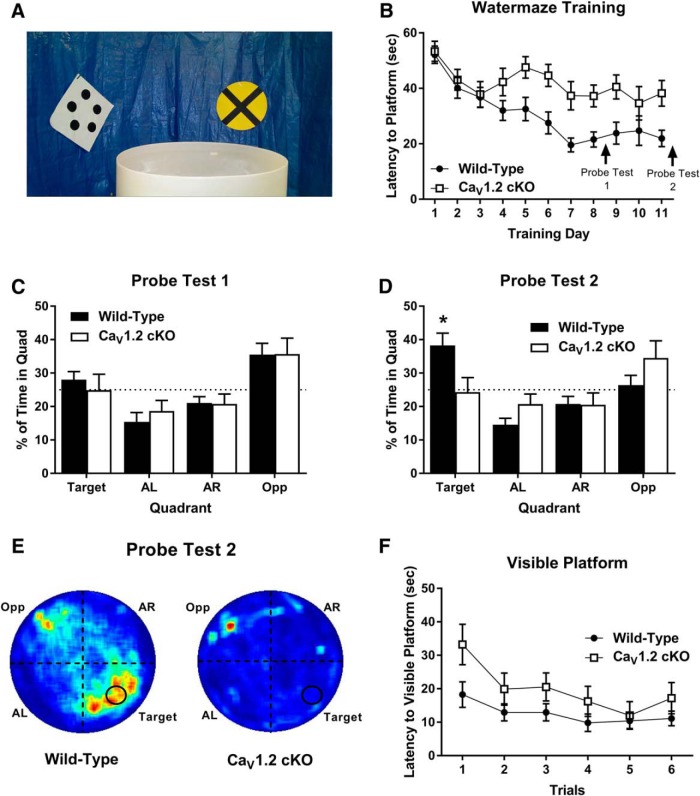Figure 4.
CaV1.2 conditional knock-out mice exhibit significant impairments in the acquisition of spatial memory in the limited cues version of the Morris water maze. A, To test for deficits in complex hippocampal learning, mice were tested in a version of the Morris water maze in which the visible cues around the room were limited. Mice were trained across 11 d and tested for their spatial memory of the platform location on days 9 and 12 of experimentation. B, Across training, CaV1.2 conditional knock-out mice (n = 14) exhibited a significant deficit in the latency to find the hidden platform compared with wild-type mice (n = 18). C, During the first probe test, neither CaV1.2 conditional knock-out mice nor wild-type mice exhibited a significant preference for the target quadrant compared with chance or the other quadrants. D, During the second probe test, wild-type mice, but not CaV1.2 conditional knock-out mice, exhibited a significant preference for the target quadrant over the other quadrants and over chance [*p < 0.0001, single-group t test with a hypothetical mean of 25% (indicated by dashed line)]. E, Heat maps for wild-type mice (left) and CaV1.2 conditional knock-out mice (right) during probe trial 2. F, When tested for their ability to find a visible platform, both CaV1.2 conditional knock-out mice and wild-type mice were able to find the platform across six trials. Data are represented as the mean ± SEM.

